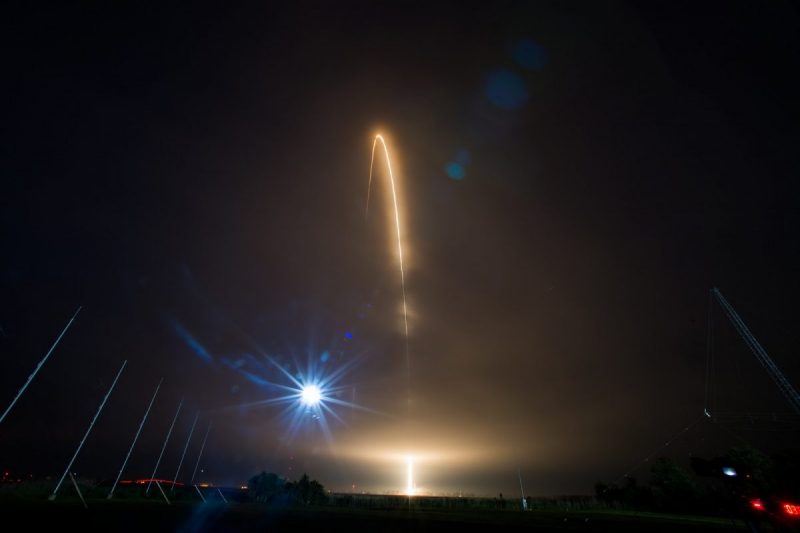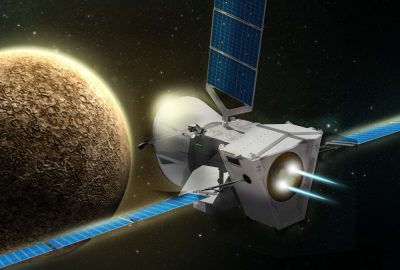NASA has successfully launched a resupply run to the International Space Station atop an Orbital ATK Antares rocket––and it was a sight to see.
The agency loaded over 7,400 pounds of rations, socks, hardware, experiments, and scientific instruments into a Cygnus capsule spacecraft then launched it from its Wallops flight facility off the coast of Virginia at 4:44 AM Eastern this morning.
(Image Credit: NASA)
Orbital ATK’s Cygnus spacecraft is one of two American-based commercial resupply ships currently being used by NASA to send critical equipment and food to the space station on a regular schedule.
The other ship is the SpaceX Cargo Dragon, the first reusable spacecraft to fly and dock with the ISS on multiple occasions since the Space Shuttle era. Monday’s pre-dawn launch, designated mission OA-9, was the 10th flights of the Cygnus.
This particular spacecraft was christened the SS J. R. Thompson after the famed NASA engineer and 5th director of the agency’s Marshall Space Flight Center. Cygnus will arrive at station on Thursday and will remain docked with the orbiting laboratory until July when it will be jettisoned to burn up in the atmosphere, along with a trash haul.
(Image Credit: NASA)
NASA astronauts Scott Tingle and Ricky Arnold are scheduled to usher in the arrival of Cygnus and will use Canada’s famed Canadarm to grapple the spacecraft. The rendezvous is expected to occur at 3:45 AM Eastern time with actual mating beginning at 7:30 AM Eastern.
“Included in the cargo in the pressurized area of Cygnus is a centuries-old method of celestial navigation. The Sextant Navigation investigation will explore the use of a hand-held sextant for emergency navigation on missions in deep space as humans look to travel farther from Earth,” Says NASA. “The ability to sight angles between the Moon or planets and stars offers crews another option to find their way home if communications and main computers are compromised”
(Image Credit: NASA)
NASA / Scientific Study
Monitoring crew health and the biological environment of the space station, and understanding long-term effects of space travel on both, are critical to NASA’s plans for long-duration, deep space exploration. The Biomolecule Extraction and Sequencing Technology (BEST) study is the agency’s next step toward advancing in-space DNA sequencing technologies that can identify microbial organisms living on the space station and understanding how the DNA of humans, plants and microbes are affected by microgravity. BEST will use a process that sequences DNA directly from a sample, with minimal preparation, rather than using the traditional technique of growing a culture from the sample.
(Image Credit: NASA)
In the realm of modern physics, the new Cold Atom Lab (CAL) on Cygnus could help answer some big questions. CAL creates a temperature 10 billion times colder than the vacuum of space, then uses lasers and magnetic forces to slow down atoms until they are almost motionless. In the microgravity environment of the space station, CAL can observe these ultra-cold atoms for much longer than possible on Earth. Results of this research could lead to a number of improved technologies, including sensors, quantum computers and atomic clocks used in spacecraft navigation.
Source: nasa.gov/press-release/nasa-









